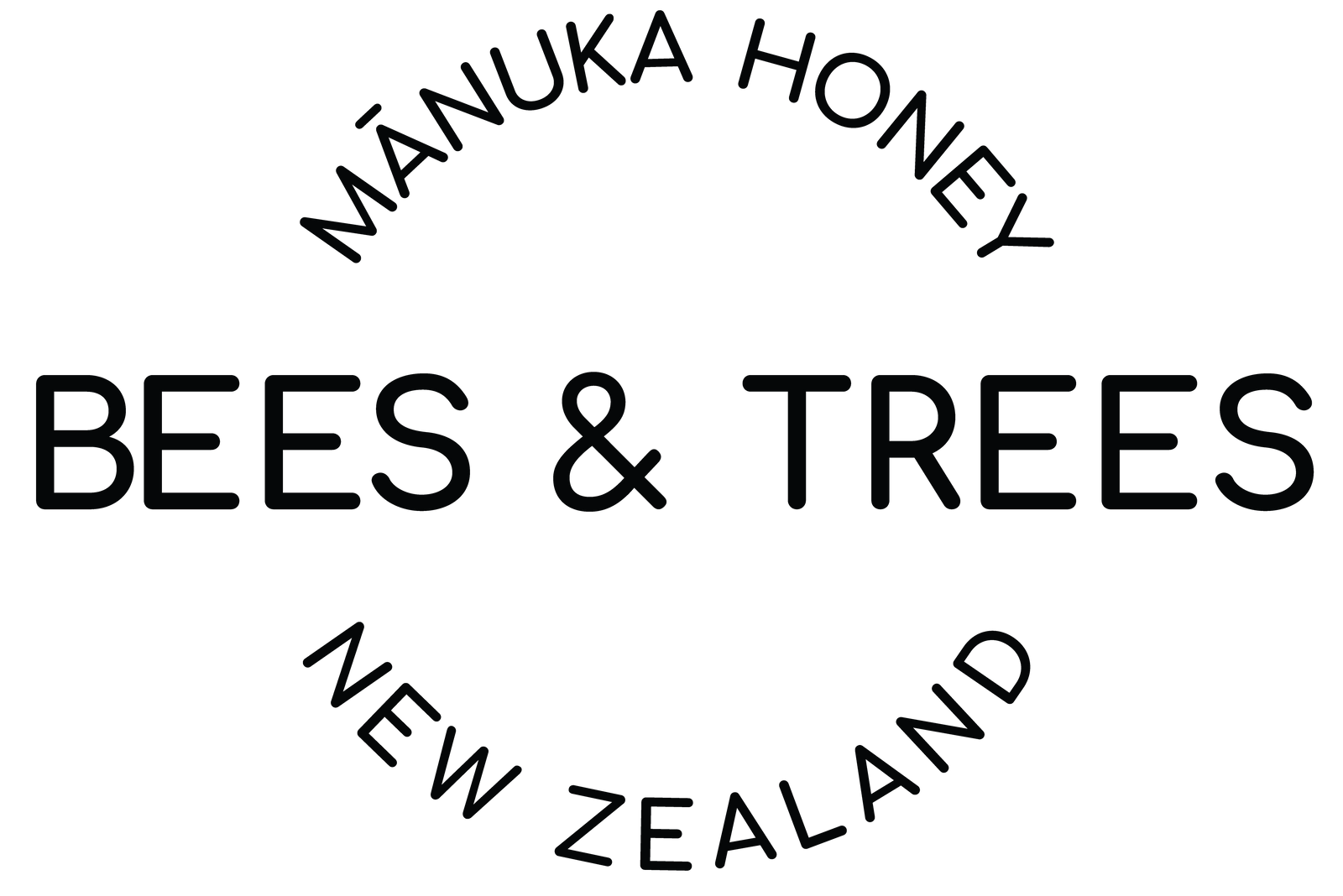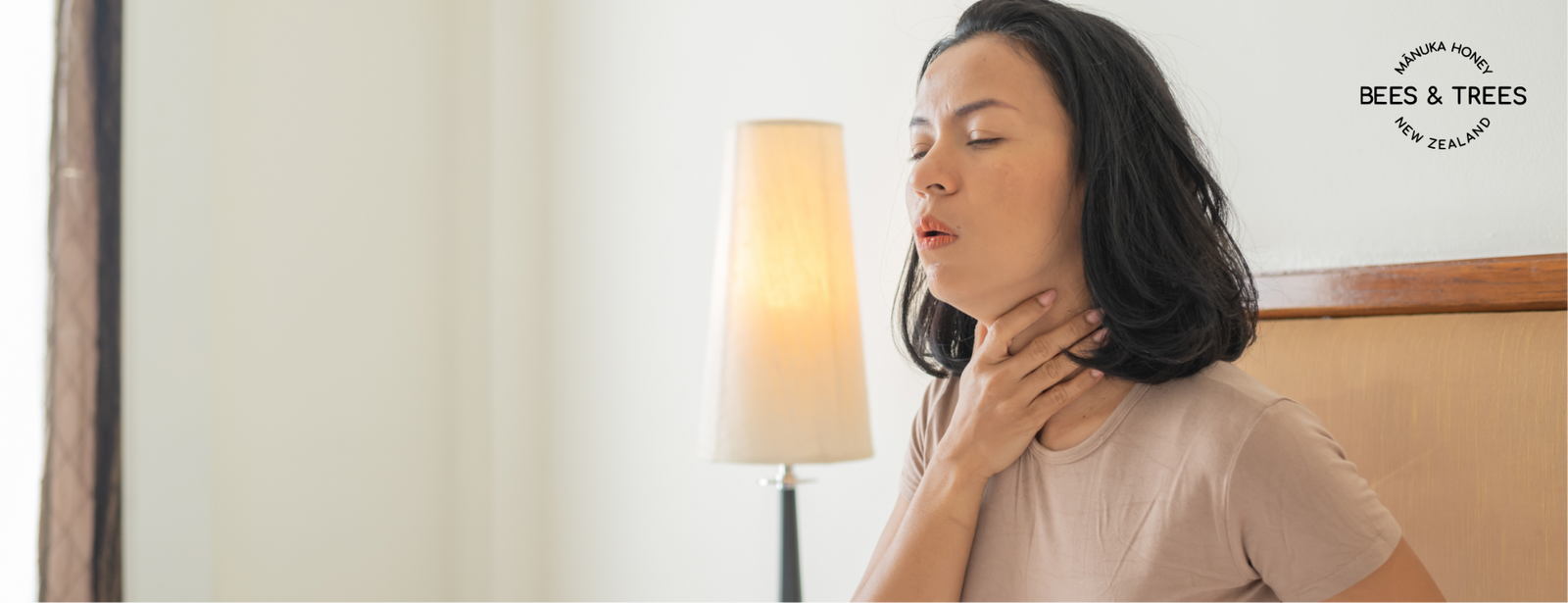Starting with beekeeping? You're in the right place. Beekeeping not only connects you with nature but also rewards you with the unique satisfaction of harvesting your own honey, much like we at Bees & Trees do from the remote hillsides of Taranaki, New Zealand. Our passion for the environment is reflected in every jar of our all-natural Mānuka honey, created through processes that you, too, can embrace on this exciting adventure into beekeeping.
What Does A Bee Keeper Do?
A bee farmer or beekeeper plays a crucial role in managing hives of honeybees, ensuring their health, productivity, and survival. This job involves various tasks that vary throughout the year, influenced by the changing seasons.
1. Fall
After harvesting honey, beekeepers get down to the busy work of starting to prepare the hives for winter. Strong colonies can be split to create new colonies with the addition of a mated queen or a queen cell. Pest management, especially for varroa mites, is crucial to keep the colonies strong for the cold months ahead and is a key focus in the fall season. Depending on the availability of nectar and pollen sources, bees can be fed to help them build up resources for the winter.
2. Winter
As winter approaches and sets in, the colony population falls to its lowest point, and the physiology of the bees actually changes. Winter bees live approximately 12-16 weeks, whereas summer bees live 4-6 weeks. The activity level in the hive drops significantly, and the colony goes into survival mode, clustering to maintain heat and waiting for warm days to venture out.
Beekeepers use of this time to clean and repair hive ware (boxes, lids, queen excluders, bee escapes, etc.) or all of the physical components utilized in configuring the hives and managing their honey production throughout the year.
3. Spring
Beekeepers are busiest during spring, checking on hives post-winter, setting up new ones, and managing the health and growth of the colonies. Varroa mite control and overall bee health are a top priority again, as each hive is carefully evaluated for how well they have done over winter. Depending on the weather and available nectar and pollen sources, some feeding may be needed until things start to bloom in the area. The Queen starts to lay in direct response to the availability of food, so the natural cycle of hive growth kicks off.
4. Summer
Summer is the most exciting time of the year for beekeepers. All of the work during the rest of the year is paying off as the bees bring in nectar and make honey. The colony size swells to 2-4 times what it was in the winter, depending on the strength of the colony. Once the colonies are on a good nectar flow, it is a good time for beekeepers to take a couple of weeks vacation and get ready for the busy harvest ahead.
Summer culminates in harvesting honey. Depending on the scope of the beekeeping operation, this could be a fun weekend activity with the kids in the kitchen or a multi-week, somewhat strenuous effort in usually hot conditions to reap the rewards of the season. Either way, it is equally rewarding.
Throughout the year, beekeeping is a dynamic and engaging occupation, requiring a problem-solving mindset and a commitment to the well-being of the bee population. Now, let’s talk more specifically about the kind of beekeeper you want to be.
Choosing Your Beekeeping Path
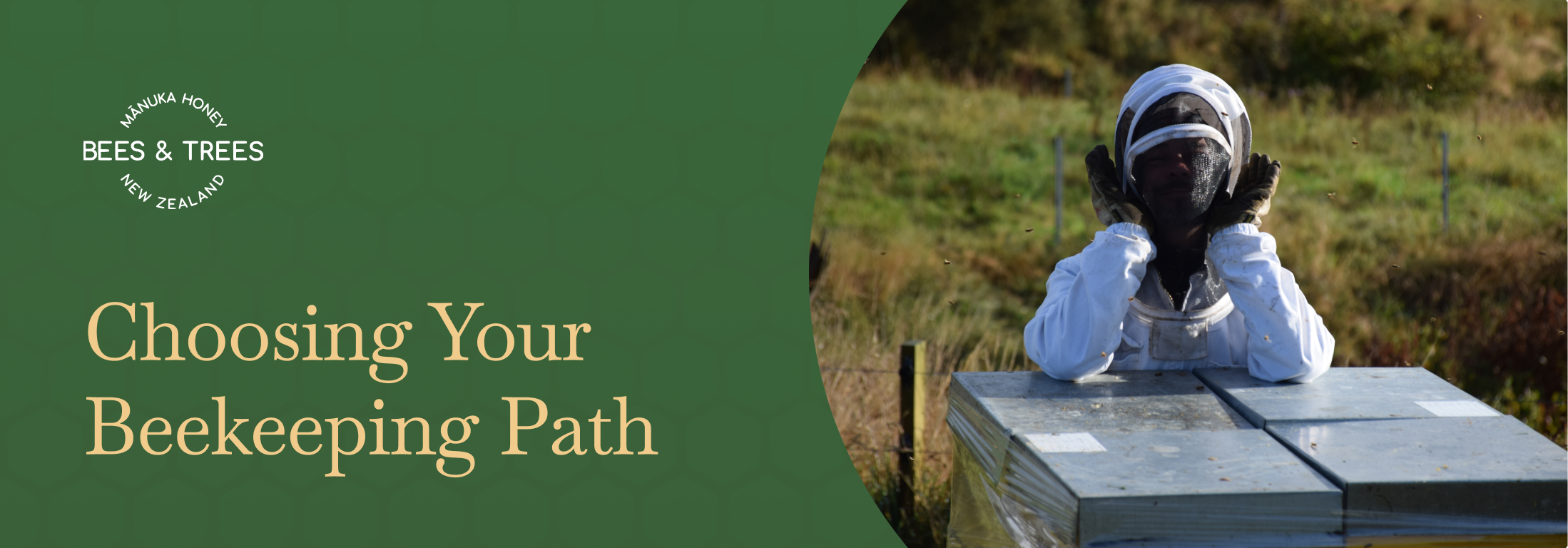
If you really want to be a beekeeper, you need to decide how you want to pursue it: as a hobby, a business, or a career. Each path offers different experiences and challenges.
-
Hobbyist: If you're considering beekeeping as a hobby, it’s about the personal joy of connecting with nature and harvesting your own honey.
-
Entrepreneur: Thinking of turning it into a business? This path requires significant time and investment but offers the freedom to be your own boss.
-
Career: For those considering a career, working with established beekeeping companies or services can provide valuable experience and a steady income.
Choose the path that aligns with your interests, goals, and commitment. Once you are clear on your beekeeping path, it's time to level up!
Leveling Up Your Beekeeping Skills
Advancing in beekeeping involves more than just knowing the basics of hive management. It requires a deeper dive into learning, networking, and gaining hands-on experience.
Here are some practical steps for enhancing your beekeeping knowledge and skills, whether you aim to keep it as a hobby or turn it into a profession.
1. Education and Certification
Enrolling in beekeeping courses and seeking certification can vastly improve your expertise. Whether it’s online classes from renowned institutions or workshops offered by local beekeeping clubs, education is key to mastering bee management and overcoming challenges.
For those considering a career in beekeeping, achieving a Master Beekeeper certification might be the next big step, offering a mix of practical experience, advanced learning, and rigorous assessments.
2. Community Involvement
Becoming part of a beekeeping association or club is a great idea. These communities provide a support network, share valuable insights, and offer the camaraderie of fellow bee enthusiasts.
They are a great resource for learning new techniques, staying informed on the latest in beekeeping, and engaging in initiatives that support bee health and beekeeper interests.
3. Hands-on Practice
Nothing beats learning that comes from direct experience with your bees. Managing your hives, observing bee behavior, and dealing with day-to-day challenges are all critical to becoming a proficient beekeeper. Working alongside experienced beekeepers or within a beekeeping business can also provide practical knowledge and build your confidence.
Remember, improving your beekeeping skills is an ongoing process. By focusing on leveling up your beekeeping skills, you can navigate the complexities of beekeeping more effectively and enjoy its rewards.
Beekeeping Preparation Considerations
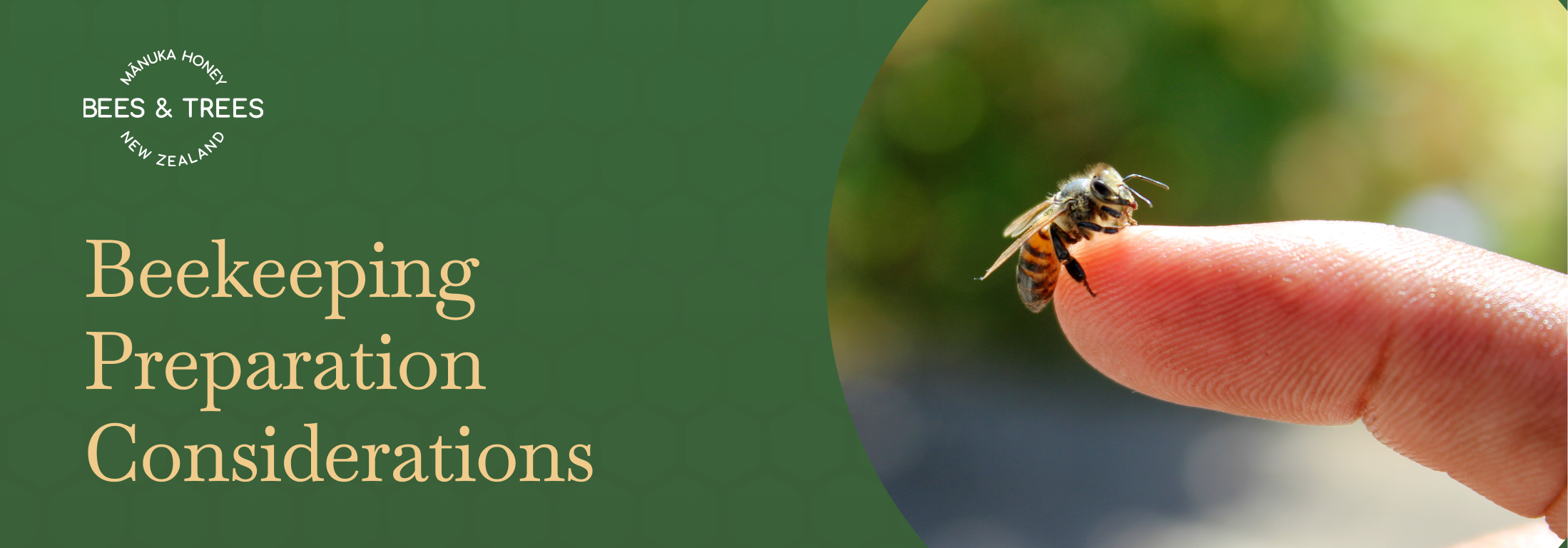
Before launching into beekeeping, there are a few critical steps to consider to ensure everything goes smoothly:
1. Legal Compliance: Check with your local zoning office to make sure beekeeping is permitted in your area. This is a crucial first step to avoid any legal issues.
2. Discuss with Your Community: It's important to have open discussions with family, roommates, and neighbors about your beekeeping plans. This helps in addressing any concerns upfront and ensures harmony.
3. Allergy Checks: Ensure that you, your household, and close neighbors are not allergic to bee stings. Allergies can range from mild to severe, and it's vital to know this ahead of time to prevent emergency situations.
4. Prepare for Physical Work and Weather: Beekeeping can be physically demanding, involving lifting and working outdoors in various weather conditions. Being physically fit and prepared for weather changes is essential.
5. Understand Bee Behavior: Learning about bee behavior is key to managing your hives effectively. Knowing how to approach and handle bees gently can greatly reduce stress for both you and your bees, minimizing the chances of getting stung.
By following these preparatory steps, you’re setting yourself up for a successful and rewarding beekeeping experience. Now, on to the very practical step of choosing the ideal hive location for your bees.
Choosing the Ideal Hive Location
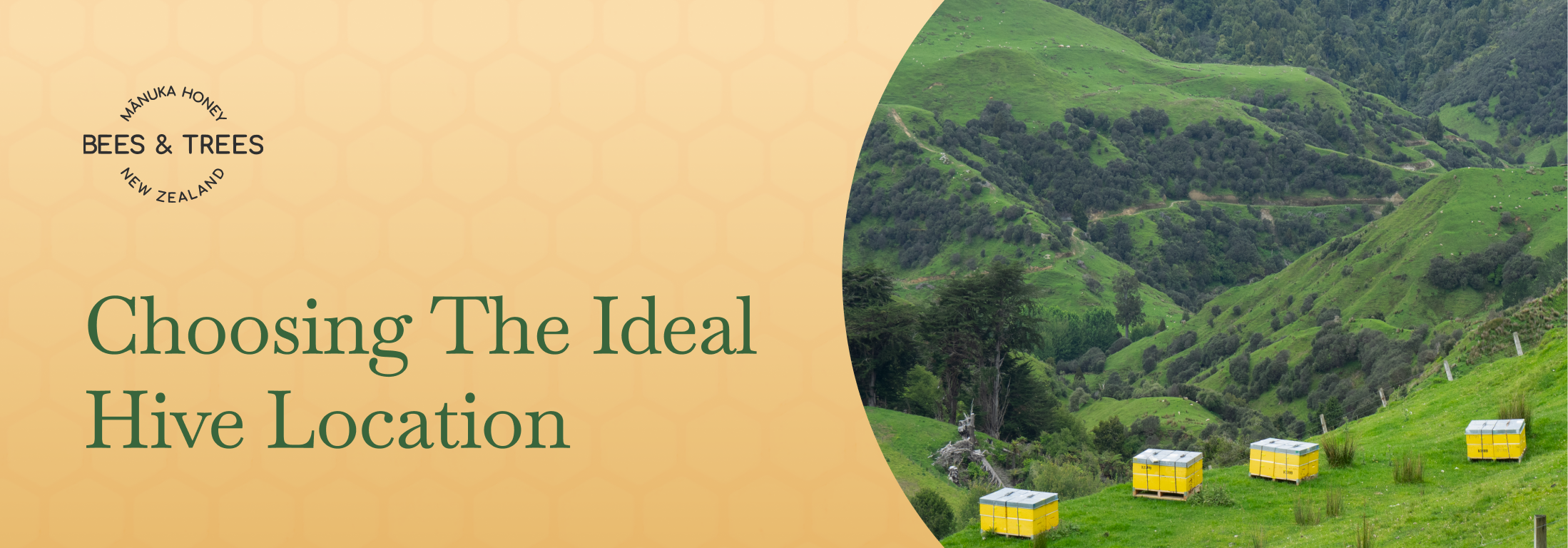
Choosing the right location for your beehives is crucial for successful beekeeping. The perfect spot combines abundant resources, safety, and environmental protection.
Start by ensuring the area offers a diverse range of flowers and a water source, which will support your bees' nutrition and promote active, healthy colonies.
Seclusion is also key. Hives placed in quiet, low-traffic spots reduce disturbances from people and animals, creating a serene environment for your bees. Placing hives in a location where they get full sun is ideal, early morning sun is also a key factor. This will help the bees get going early on summer days, and also help with passive solar heating in the winter. Try to minimize exposure to high winds. A hedge can be a natural windbreak or a low spot in a hilly area.
Accessibility matters for regular hive checks and maintenance, so choose a spot that's easy for you to manage. Adhere to local zoning laws and maintain good relationships with neighbors to ensure your beekeeping practices fit within community standards. Lastly, avoid areas treated with pesticides to protect your bees from harmful chemicals.
By carefully selecting a location that addresses these considerations, you create a strong foundation for a flourishing beekeeping venture. Once you have the perfect hive location, it’s time for the next step.
Setting Up Your Bee Colony
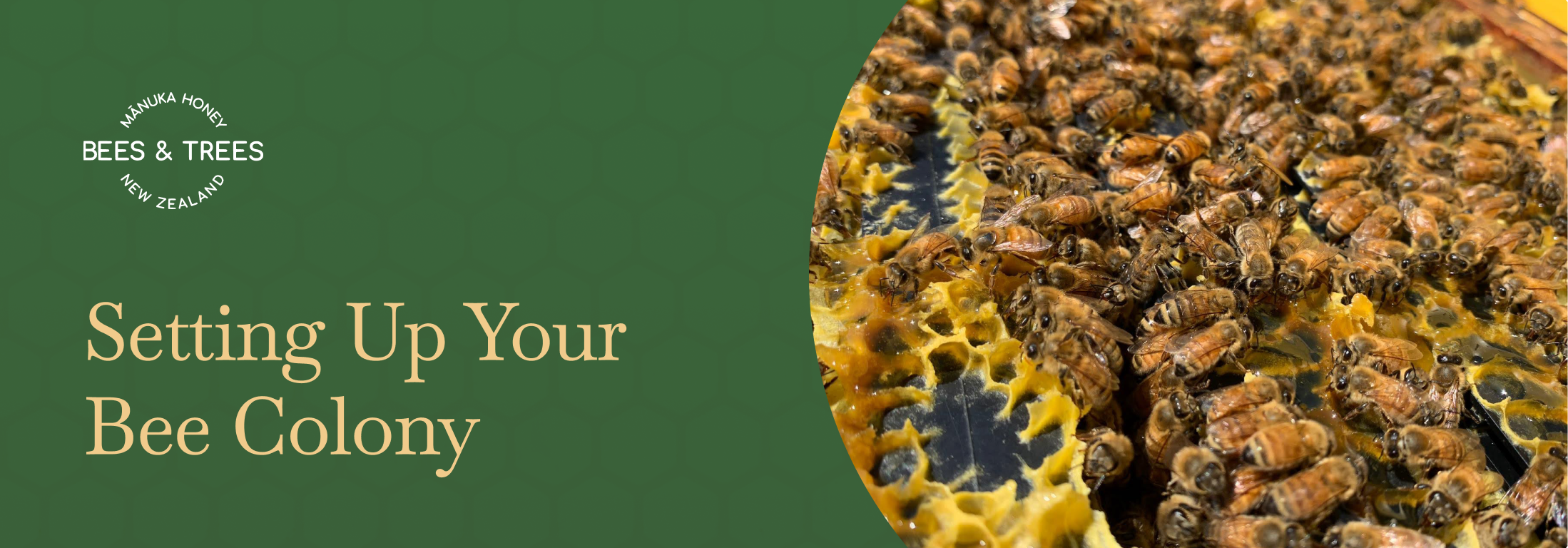
Creating a welcoming and efficient environment for your bees is a pivotal step in embarking on your beekeeping adventure. Here’s a guide to getting your hives ready:
1. Choosing Your Hive
Start by deciding on the type of hive that best suits your beekeeping goals and style. Langstroth hives are popular for their modular design and ease of honey harvesting, while top-bar hives appeal to those looking for a more natural beekeeping approach. Each type has its benefits depending on your priorities, such as ease of management or honey production.
2. Preparing the Site
After choosing your hive type, prepare its future site. Ensure the ground is level, and consider adding a layer of stones or gravel to keep the area well-drained. Position the hive entrance so it's shielded from the wind, and raise the hive off the ground to deter pests.
3. Assembling the Hive
Whether you’re assembling a pre-made kit or building from plans, follow all instructions for setting up your hive structure. Langstroth setups involve stacking boxes filled with frames, while top-bar hives require a horizontal bar set up for the bees to build their comb.
4. Securing the Area
A fence or natural barrier like tall plants around your hives can offer protection and privacy for your bees while encouraging them to fly upwards, minimizing the chance of bee-human interactions.
5. Maintaining Access
Arrange your hives with future maintenance and inspections in mind, spacing them out for easy access. This planning ensures that you can comfortably manage the hives, perform regular checks, and harvest honey without hassle.
6. Equipping Yourself
Proper beekeeping attire and tools, including a bee suit, gloves, and a smoker, are essential for safe and effective hive management. These tools help you to approach your bees calmly and perform necessary tasks with minimal disturbance.
7. Introducing Bees to Their New Home
Once your hives are set up, it’s time to introduce the bees. Purchase your bees from a reputable supplier, ensuring you’re starting with a healthy colony. There are several ways to introduce bees to their new hive, including package bees, nucs (nucleus colonies), or capturing a swarm. Each method has its advantages, but all require careful handling as you transfer the bees into their new environment.
Constructing your hives with care and consideration sets the stage for a thriving bee colony and a rewarding beekeeping experience, blending functionality with your personal beekeeping philosophy.
Conclusion
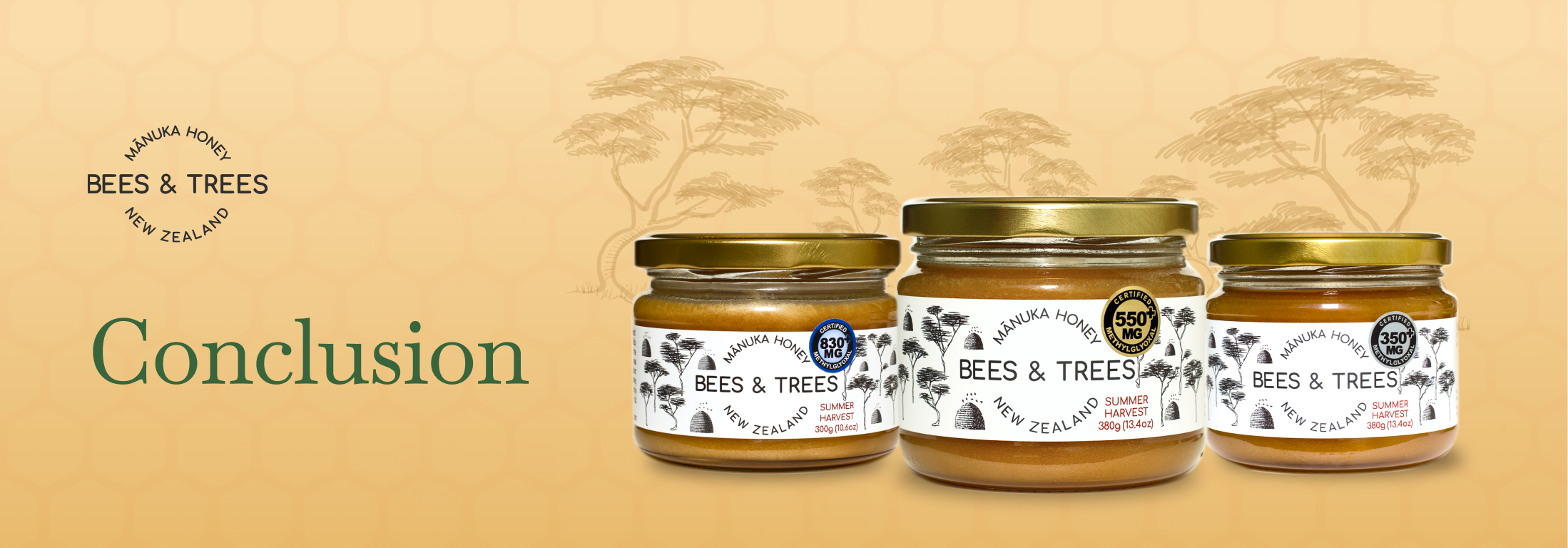
Starting in beekeeping is a journey that combines preparation, care, and learning. It's a commitment to the environment and a unique way to engage with nature. We at Bees & Trees have been dedicated to creating high-quality, all-natural Mānuka honey from the pristine, remote hillsides of Taranaki, New Zealand, reflecting a commitment to environmental stewardship and natural wellness that you too can embody in your beekeeping pursuits. Beyond its applications in beekeeping, the benefits of Manuka honey extend to pet health.
Embrace the learning curve, connect with other beekeepers, and enjoy the process. Beekeeping isn’t just about the honey; it's about the journey and the positive impact you can have on the environment. Get ready to dive into a rewarding adventure with your bees!

